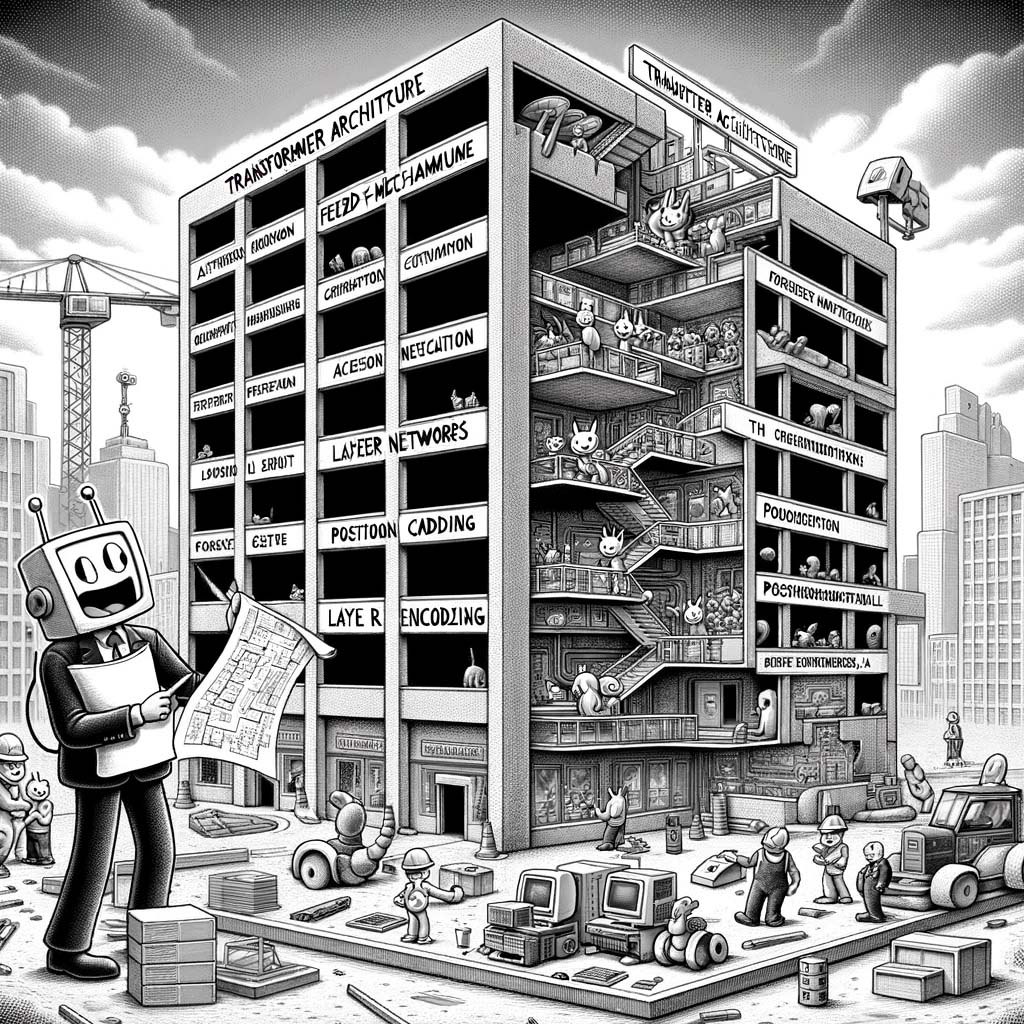Transformer Architecture
Think of a large, complex office building with many rooms and departments, each handling different tasks but all working together for the overall functioning of the office. In AI and machine learning, the "Transformer Architecture" is somewhat like this building. It's a framework made up of different components, each performing a specific function, and together they process and understand language in a sophisticated way.
In Topics: Artificial Intelligence (AI) | Artificial Neural Networks (ANN) | Cutting-edge Technologies | Deep Learning (DL) | Emerging Technologies | Future Directions, Trends and Challenges | Natural Language Processing (NLP) | Natural Language Understanding (NLU) | Sound and Audio Processing | Text and Language Processing

Figure: A charming illustration of "Transformer Architecture".
What is Transformer Architecture?
Transformer Architecture is a design or blueprint used in AI, particularly for tasks involving natural language processing (NLP). It's a model that's uniquely structured to handle sequential data, like text, in a way that's different from earlier models. Transformers can process entire sequences of data (like sentences or paragraphs) all at once, rather than one piece at a time.
Key Components of Transformer Architecture:
Attention Mechanism: The heart of the Transformer is the 'attention mechanism.' It allows the model to focus on different parts of the input data (like words in a sentence) and understand how they relate to each other.
Encoder and Decoder: The Transformer architecture typically has two main parts - the encoder and the decoder. The encoder processes the input data (like a sentence in English), while the decoder generates the output (like the translated sentence in French).
Parallel Processing: Unlike previous sequential models, Transformers process all parts of the data simultaneously. This parallel processing makes them faster and more efficient.
No Recurrence or Convolution: Transformers do not use recurrent layers (found in older models like RNNs) or convolutional layers (used in image processing), relying entirely on the attention mechanism to process data.
Examples of Transformer Architecture in Use:
Language Translation Services: Translating text from one language to another while maintaining context and meaning across entire sentences.
Content Generation: Writing coherent and contextually relevant articles or generating creative content based on certain prompts.
Speech Recognition: Converting spoken language into text, understanding the context and nuances of speech.
Question-Answering Systems: Systems that can understand a user's question and provide relevant and accurate answers.
Remember:
Transformer Architecture represents a groundbreaking approach in the field of NLP within AI. Its ability to process language data in parallel and understand the context and relationships within text has led to significant advancements in tasks like translation, content generation, and more. Understanding this architecture is essential for appreciating the complexities and capabilities of modern AI language processing systems.
See also: Deep Learning (DL)
